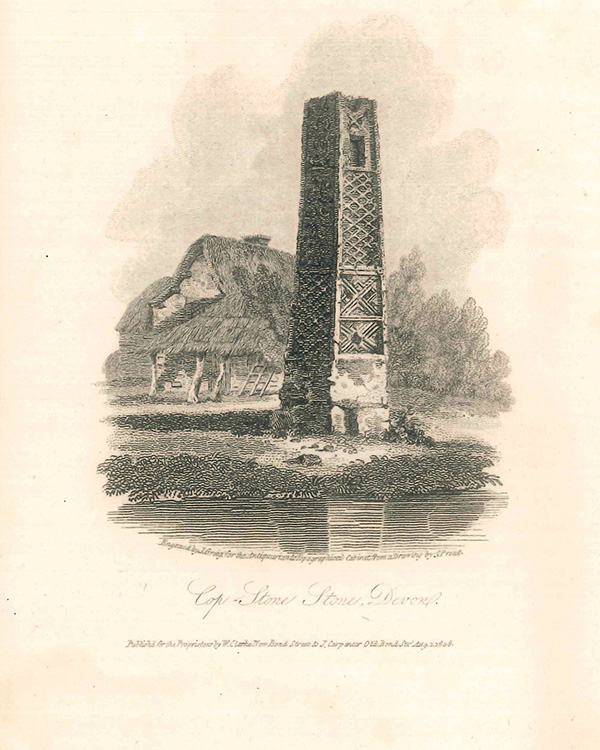
By Ellie Jones, Cathedral Archivist
Copplestone is a small village in mid-Devon, 13 miles northwest of Exeter. It has no parish church of its own, but its best-known historic landmark is an extraordinary 10th century granite cross shaft which sits at the point where the parishes of Colebrooke, Crediton, and Down St Mary meet.
When this engraving by J. Greig (from a drawing by J. Swete) was published for the Antiquarian & Topographical Cabinet in 1808, not much was known about it. The accompanying text proposes that it may have been a parochial boundary marker or a “landmark of the family of Copplestone, which enjoyed considerable possessions in this neighbourhood”. The ‘Copelan Stan’ is named as a boundary marker in a charter issued by King Edgar to Ælfhere, his faithful minister, in 947 (kept at The National Archives, Kew), and it is now widely believed to be a monument erected in the memory of Bishop Putta, who was murdered on a journey between Bishop’s Tawton and Crediton in 910. Carved stones of this type are extremely rare in the South West of England, and this very fine example features intricate interlaced decoration and carvings of human figures.
Several members of the extended ‘family of Copplestone’ mentioned above had direct connections with the Cathedral, Diocese and local politics. This includes John Copplestone (died 1458) who was a Member of Parliament and steward of the estates of Bishops Stafford and Lacy, and another John who was Chancellor of the Cathedral from 1675-1689. In October 1710 the Dean, Lancelot Blackburne, objected to the proposed ringing of Cathedral bells “upon Sir Copplestone Bampfield’s making his Publick Entry into the City”. Sir Coplestone Warwick Bampfylde, 3nd Baronet, was elected MP for Exeter in 1710, and MP for Devon from 1713-1727. He was briefly imprisoned in 1715 for Jacobite sympathies and in 1716 the diarist Mary, Countess Cowper, wrote of him as a “drunken country gentleman” prone to telling tall tales.